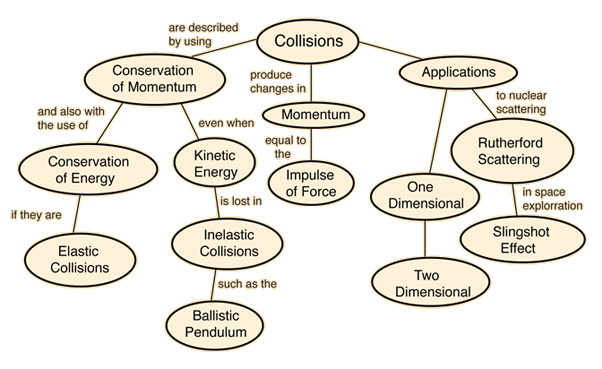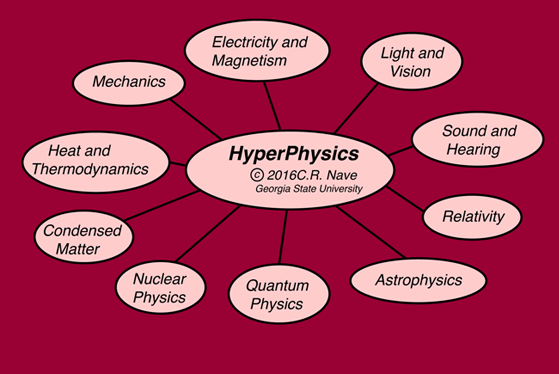Last time, we saw an overview of the proton spin crisis (whose historical basis is discussed by Jaffe): Each proton has a spin value of 1/2, but only about 25% of this value comes from its three constituent quarks. So, physicists need to look elsewhere for the building blocks of the other 75% of this spin value.
(Side note: This quest isn't entirely unlike the quest to find the missing matter and energy in the universe!)
Recent experiments have probed two possible sources: gluons and pair production.
Gluons. Remember how a proton is composed of three quarks (two up and one down)? Well, those quarks are held together by the strong force, which is mediated by gluons (similarly to how the electromagnetic force is mediated by photons). Therefore, a proton is really three quarks held together by a sea of gluons. Gluons have a spin value of 1, so it's possible for them to be oriented in such a way as to contribute to the proton's spin. Experiments at the Relativistic Heavy-Ion Collider (RHIC) at Brookhaven National Laboratory lend support to this idea.
Anti-quarks. It's also possible to temporarily break up a gluon into a quark and anti-quark. So, a proton's sea of gluons features temporary "flashes" of quark-antiquark pairs. So, these pairs might also be contributing to the proton's spin. However, other experiments at RHIC exploring this pair production showed that their spin contributes very little to the proton spin.
Phys dot JU - The JU Physics Department Blog
29 October, 2014
27 October, 2014
The Proton Spin Crisis - What protons are made of
You may not be aware of it, but there is a crisis going on in physics! Here's the brief summary:
- Each proton has a spin value of 1/2.
- Protons are made of three quarks: two ups and one down.
- The proton's spin value should, therefore, be the sum of the spin values of its quarks: For example, 1/2 + (-1/2) + 1/2 = 1/2.
- When you measure the spin of the quarks inside a proton, you don't come up with the correct total!
You can see why we call it a crisis! (Well, maybe "puzzle" is a bit less alarming and more intriguing. But, this is the internet...) This week, we're going to look at the different pieces to this puzzle, and bring you up to date on some of the latest insights into the problem.
First up: How do we know that the proton is made of these three quarks? We can't see a proton, and the nature of the strong force is such that the quarks don't exist independently!
APS's Physics provides an excellent overview of the original particle collision experiments that first revealed the proton's internal structure. The discovery required a detailed back-and-forth conversation between experimental and theoretical physicists and various mathematical models, ultimately winning the researchers the 1990 Nobel Prize in Physics.
23 October, 2014
Learning from Wikipedia
This week, we're looking at on-line resources that can help students learn physics. Today, we're going to look at a web resource that is supposedly forbidden for students.
That's right: Wikipedia.
Professors warn students about Wikipedia, and rightly so: Because anyone can edit Wikipedia, it's vulnerable to incorrect information. (But don't worry; there's a Wikipedia article about Wikipedia's accuracy.) So most professors will agree that Wikipedia is not an acceptable reference to cite in an academic paper.
However, that doesn't mean students can't learn from Wikipedia, for three reasons:
That's right: Wikipedia.
Professors warn students about Wikipedia, and rightly so: Because anyone can edit Wikipedia, it's vulnerable to incorrect information. (But don't worry; there's a Wikipedia article about Wikipedia's accuracy.) So most professors will agree that Wikipedia is not an acceptable reference to cite in an academic paper.
However, that doesn't mean students can't learn from Wikipedia, for three reasons:
- While there are people who will spread misinformation on Wikipedia, there are just as many who will jump in to make corrections. Caution--not outright mistrust--is the name of the game.
- The summaries of complicated topics like physics are, generally, very well written, with helpful diagrams, animations, etc.
- Wikipedia articles are required to cite external sources. So, when you've finished reading an article, you can check its correctness in these sources (which usually are the references you want to cite in an academic paper).
Let's take, for example, the Wikipedia article about physics' particle in a box problem. Could a malicious user come along and ruin this article? Yes! Will the misinformation remain for long, with professors and students turning to it to check equations, look for examples & animations, and refresh their understanding of the problem? No!
The description is well written, with a nice qualitative introduction, followed by a direct solution of the one-dimensional problem organized in order of increasing complexity of topic filled with links to other articles that explain the technical terms employed, capped off with a discussion of higher-dimensional problems, based on the preceding one-dimensional discussion. The text is accompanied by helpful graphics and animations. At each step along the way, a math-equipped reader can check to make sure that the content is sound and edit as required.
And at the end of the article are references--good references available on-line or at a library.
So, can you learn physics from Wikipedia? Absolutely! But more importantly, you can learn how to learn, by reading carefully and checking the information along the way.
22 October, 2014
Physics on Reddit
Reddit advertises itself as "the front page of the internet." It's an apt moniker: Reddit shows you what it's users find interesting because users can up-vote or down-vote any post. More specifically, it shows you what it's users find interesting within different subjects, called subreddits. The subreddits continue to break up fractally, such that you can find a group of people discussing just about anything. And if you find a sub-sub-sub-sub-topic that doesn't have a subreddit, you can make one.
Here's CGP Grey's explanation of Reddit and why it's an awesome place to learn new subjects:
So, for example, Reddit is a great place to learn physics, because physicists interested in discussing physics on-line tend to frequent the physics subreddit. Users post links to articles and pictures, and host "AMAs" (Ask Me Anything), in which a professional physicist hosts an open forum regarding their work. Here's a recent one regarding climate change, or one about earthquakes.
So, what interesting physics topics do you see on Reddit?
Here's CGP Grey's explanation of Reddit and why it's an awesome place to learn new subjects:
So, for example, Reddit is a great place to learn physics, because physicists interested in discussing physics on-line tend to frequent the physics subreddit. Users post links to articles and pictures, and host "AMAs" (Ask Me Anything), in which a professional physicist hosts an open forum regarding their work. Here's a recent one regarding climate change, or one about earthquakes.
So, what interesting physics topics do you see on Reddit?
21 October, 2014
What if ridiculous questions were addressed by serious physics... and stick figures?
This week, we're highlighting resources that can help students learn physics. Yesterday, we discussed HyperPhysics, an on-line concept map, making it a great complement to your physics textbook. Now imagine what if your physics textbook illustrated the concepts of physics with ridiculous yet intriguing examples, such as "What would happen if you tried to hit a baseball pitched at 90% the speed of light?" or "How hard would a puck have to be shot to be able to knock the goalie himself backwards into the net?" or "How quickly would the ocean's drain if a circular portal 10 meters in radius leading into space was created at the bottom of Challenger Deep, the deepest spot in the ocean? How would the Earth change as the water is being drained?" That's precisely what Randall Munroe, the creator of the web comic xkcd.com, sets out to do each week in his what if? blog (and now book).
Each week, what if? addresses a reader-submitted question with equal parts accuracy and ridiculousness. (Some readers may find this familiar.) Munroe explains the physics principles behind the scenario in question, shows or describes the calculations involved in determining an answer, and then extrapolates beyond the original question to ludicrous extreme cases.
Discussions like these help students learn physics in a number of ways:
Each week, what if? addresses a reader-submitted question with equal parts accuracy and ridiculousness. (Some readers may find this familiar.) Munroe explains the physics principles behind the scenario in question, shows or describes the calculations involved in determining an answer, and then extrapolates beyond the original question to ludicrous extreme cases.
Discussions like these help students learn physics in a number of ways:
- By showing that physicists don't always take themselves/their subject/life super seriously.
- By showing that our universe can be a weird place and physics explains that weirdness.
- By demonstrating that, with just a few core physics concepts, one can study and make predictions regarding physical scenarios, no matter how strange.
So, what's your favorite scenario discussed on what if? What's a scenario you'd like to send in?
20 October, 2014
So you want to learn some physics...
Physics is a subject that many students find fascinating yet difficult to learn. Sometimes, all it takes is "just the right presentation" of material and something in the learner's mind clicks, and they're eager and ready to learn additional concepts.
So, it's important that physics learners have access to multiple avenues of learning (class presentation, textbook, demos, laboratory activities, student-student interaction, tutoring, office hours, simulations...). This week, we're going to look at four on-line resources that many physics learners find helpful.
First up is HyperPhysics, a web-based network of physics topics that allows students to explore connections between physics topics, read sample problems, and investigate scenarios with built-in calculators.
HyperPhysics is unique in that it's organized as a concept map, in which ideas are represented by bubbles and the relationships between them are represented by lines connecting the bubbles. You can begin exploring from the top-level bubbles on the home page:
...or by searching for a particular topic (say, collisions) and seeing how it's related to other topics and examples:

HyperPhysics is also available as an iOS app.
So, take a look around! Search for what you're currently learning in your physics class. What new relationships do you see? What new topics had you never heard of before navigating the concept map?
15 October, 2014
What's Next in the Hunt for Dark Matter?
This past July, the US Department of Energy and National Science Foundation announced which next-generation dark matter projects they'll be supporting.
Dark matter takes a lot of equipment, people, time, and creativity to detect. It also requires being in just the right conditions. For example, the XENON experiment is buried under Italy's Gran Sasso Mountain to eliminate any stray radiation from interfering with the detector.
The winning next-generation projects are
Dark matter takes a lot of equipment, people, time, and creativity to detect. It also requires being in just the right conditions. For example, the XENON experiment is buried under Italy's Gran Sasso Mountain to eliminate any stray radiation from interfering with the detector.
The winning next-generation projects are
- The Super Cryogenic Dark Matter Search, which uses "a collection of hockey-puck-sized integrated circuits"to find Weakly Interactive Massive Particles (WIMPs), a prominent dark matter candidate.
- The LUX-Zeplin experiment, which can find WIMPs of a wide range of masses.
- The next iteration of the Axion Dark Matter eXperiment, which uses magnetic fields to convert axions (another dark matter candidate) into photons.
Subscribe to:
Posts (Atom)
